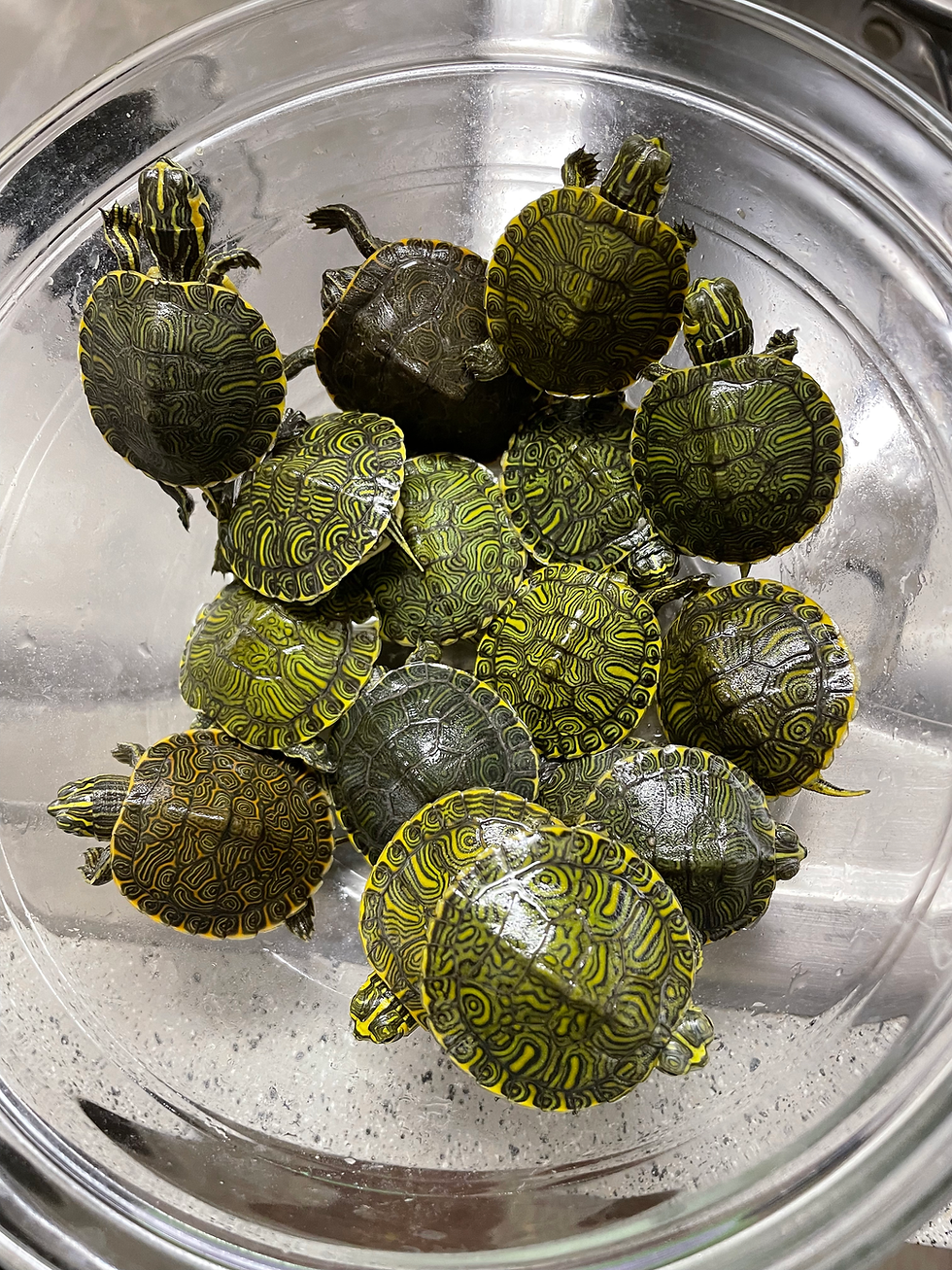How The Shearon Harris Project Fits In
- aturtleforeverylog
- Jan 19, 2022
- 3 min read
Updated: Jan 24, 2022
To accomplish the critical final step of actually boosting wild turtle populations we have planned our most ambitious project. Again, in conjunction with the ncwrc, we intend to expand on an existing smaller scale ncwrc program at shearon Harris reservoir in wake county to re-vegetate and eventually re-create extensive wetlands in a number of major coves throughout the lake. These wetlands have been lost in the last five years to development and de-forestation in the creeks feeding the lakes watershed and to the critical efforts to control a massive infestation of the exotic invasive submerged waterplant called hydrilla using 4000 sterile grass carp. The hydrilla was successfully eliminated but its thick mats of vegetation functioned as a giant biological water filter and its loss plus the changes upstream in the watershed has noticeably affected the water quality and clarity of the wetlands. The carp in turn found themselves in need of an alternative food supply and preceded to mow down the vast beds of native wetland plants. This process happened to varying degrees to each of the three major watersheds feeding the lake, drastically altering the ecosystems distribution and ability to support its formerly much larger turtle, fish and duck populations.
Enter the ncwrc's revegetation program which utilized a grant from the federal sportfishing restoration fund to among other things place six foot across metal fence circles in shallow coves all over the lake. Planted with native wetland plants, these founder colonies would provide specific information regarding which plants do the best in Harris lake and the successful ones would hopefully grow robust enough to eventually have their protective fencing removed and expand throughout the wetlands.
And the successful ones would hopefully grow robust enough to eventually merge together into one big, cove-filling mass able to hold it's own against plant eaters of all types. However, to see this actually come to fruition at Harris lake will require long term efforts on several fronts at once whereas the current ncwrc program is actually winding to a close at this point. A turtle for every log can step in and provide the following critical services to build off this beginning program:
A grass carp removal campaign to majorly reduce plant predation Expansion of fenced areas to cover entire coves to provide protected areas for wetland plants to colonize without the threat of predation Mass plantings of selected wetland plants to more rapidly create water quality and clarity benefits and boost the overall fertility witin the larger fenced communities and beyond If we can successfully implement and maintain these basic physical changes over a long enough time period, we will eventually be able to create a thriving, self-sustaining ecosystem that no longer needs protective fencing to survive. We have a special fishing license that allows us to utilize commercial equipment and methods to remove carp. We are partnered with mello marsh farm in siler city, NC to provide the appropriate array of wetland plants and expert advice for creating wetland communities suited to our local area. Finally, we are intimately familiar with the historic structure and extent of wetlands on the lake because we have been monitoring turtles and other wildlife there since the 1990s. We are thus uniquely equipped and motivated to rejuvenate this potentially immense wetland habitat as a thriving ecosystem able to accommodate the growing surplus of turtles from our breeding ponds and the expansion of its existing populations. This will bring us full circle to insuring that our future will have turtles for every log!






Comments